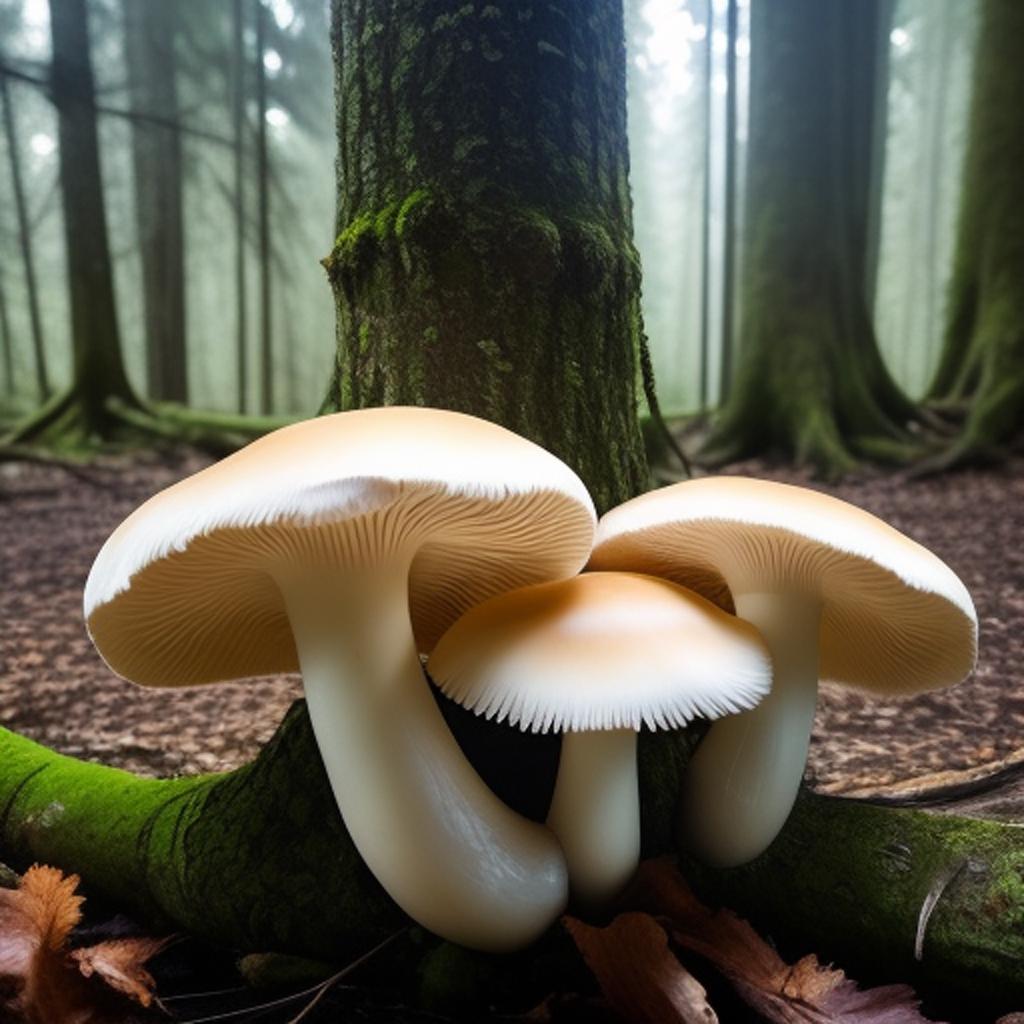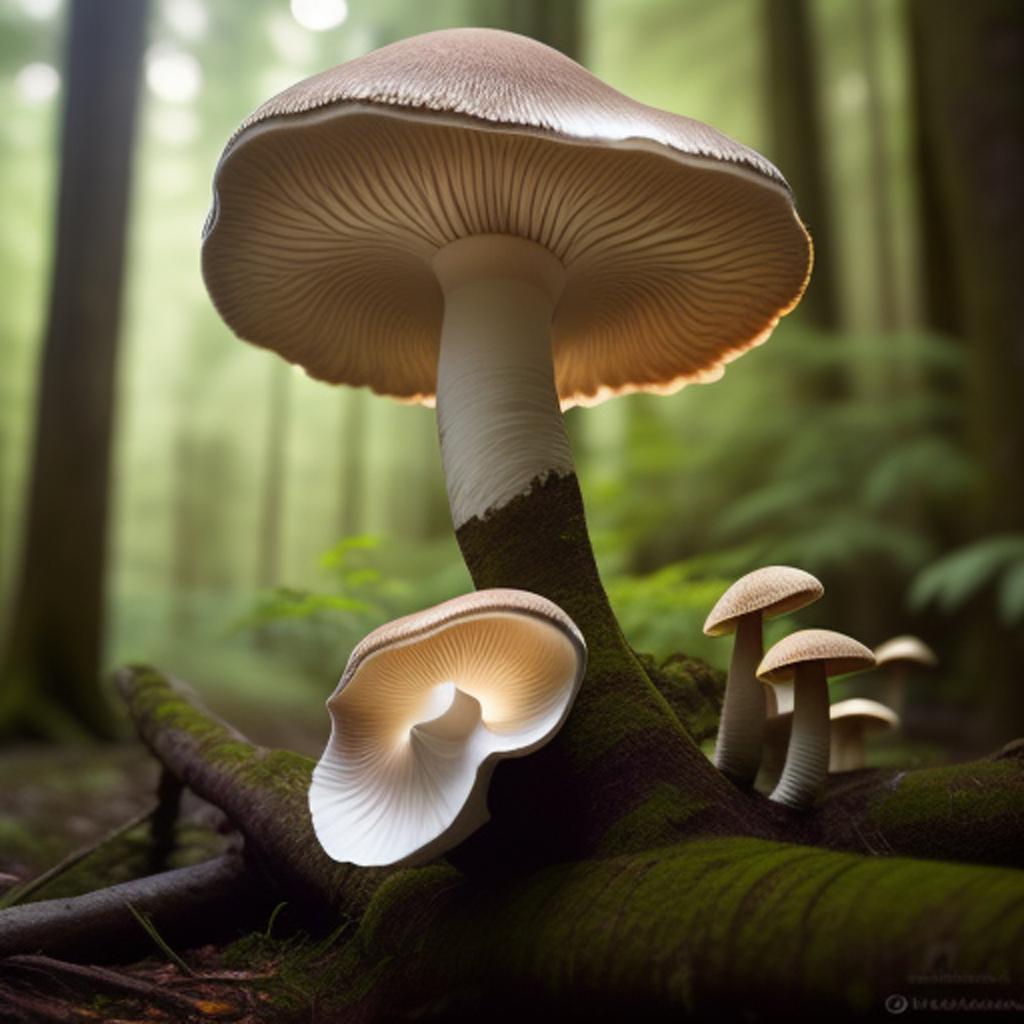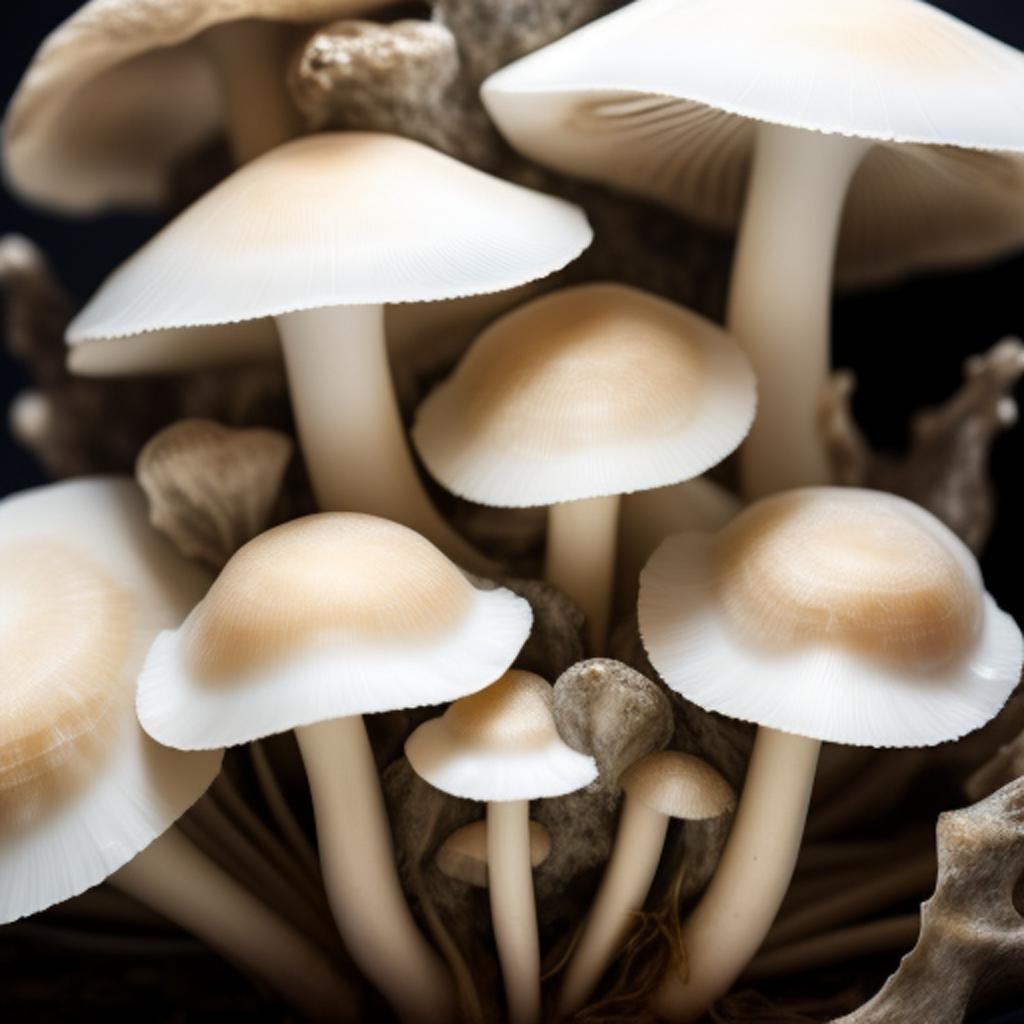Explore the rich potential of oyster mushroom farming in the climate-friendly terrain of Georgia – a lucrative and sustainable agricultural venture.
Why Grow Oyster Mushrooms in Georgia
Georgia’s agriculture industry carries immense potential for oyster mushroom farming owing to the state’s climate and diverse agricultural resources. Cultivating oyster mushrooms in Georgia’s climate not only presents a profitable venture but also contributes towards the state’s push for diversification and sustainability in agriculture.
Ideal Conditions for Oyster Mushroom Cultivation
The climate of Georgia, with its warm summers and cool winters, plays a key role in making it a suitable environment for oyster mushroom cultivation. In-depth knowledge of optimal cultivation conditions is paramount for achieving successful growth.
- Temperatures between 55-75°F for optimal growth
- Humidity levels between 80-90%
- Good air circulation to prevent fungal diseases
- Filtered light to stimulate healthy development
- Elevated CO2 levels for initial growth phase
- Reduced CO2 levels for fruiting phase
Choosing the Right Oyster Mushroom Variety
The right oyster mushroom variety can significantly influence the success of your Georgia mushroom farm. This choice directly affects your yield and eventual profit.
- Choose the Blue Oyster Mushroom for its cold tolerance, ideal for Georgia’s fall and winter seasons.
- The Pearl Oyster Mushroom thrives in warmer climates, making it suitable for Georgia’s spring and summer.
- Golden Oyster Mushrooms are versatile and can adapt to a wide range of conditions.
- Phoenix Oyster Mushrooms, known for their high yield, can thrive in Georgia’s various seasons.
Sourcing High-Quality Oyster Mushroom Spawn
Obtaining the best-quality oyster mushroom spawn is crucial for a superior harvest. The seed quality directly affects the mushroom growth, vigor, and ultimately, the yield.
- Researching well-known Georgia-based suppliers
- Requesting samples to assess spawn quality
- Inquiring about spawn production methods to ensure sustainable practices
- Reading reviews or seeking recommendations from other mushroom growers
- Checking for spawn freshness – it should be free of any foul smell and should not appear dried or slimy
Preparing the Growing Substrate
In Georgia, preparing the optimal substrate for oyster mushrooms involves selecting organic materials that are readily decomposed by the fungi. The steps taken in preparation are equally crucial for successful cultivation.
- Choosing organic substrate materials such as straw, hay, or grain.
- Ensuring the substrate is hydrated but not saturated, ideal for oyster mushroom mycelium.
- Advanced methods include pasteurization of the substrate to eliminate harmful elements.
- Balancing nutrient-rich substrates with additional supplements if necessary, such as wheat bran.
- Properly shredding and layering the substrate to encourage uniform mycelium colonization.
Setting up a Mushroom Growing Container
To nurture a bountiful harvest, the selection of a suitable container becomes a prime necessity. Ranging from recycled materials like plastic bins to specially designed grow bags, your choice should provide sufficient space for dense growth while facilitating proper air circulation.
A judiciously chosen mushroom growing container ensures denser growth, satisfactory air circulation, and acts as a safe haven for your oyster mushrooms, thereby enhancing the overall yield.
The container shapes the potential of your oyster mushroom yield, functioning as a key component in the cultivation process. It supports the fungal colony by hosting the substrate, conserving moisture, and providing a secure environment for development.
A strategically chosen and well-prepared container can aid in maximizing your oyster mushroom yield. It’s best to ensure the absence of toxic materials in your container, as these can be detrimental to the health of your crop and, ultimately, your harvest.
Maintaining Optimal Temperature and Humidity Levels
Temperature and humidity significantly influence the growth of oyster mushrooms in Georgia. Consistency in these conditions ensures their healthy development.
Oyster mushrooms thrive between 55-75°F. The ideal humidity level for successful cultivation should be maintained between 80-90%; a humidifier can help accomplish this goal.
High temperatures can dry out the growing substrate, and low temperatures chokes the growth. Meanwhile, a lack of humidity makes Spores less likely to germinate.
Proper care for temperature and humidity control in indoor cultivation might necessitate insulated rooms, sophisticated temperature control systems, and a commercial-grade humidifier. If possible, outdoor cultivation should be preferred considering Georgia’s favorable climate.
Providing Adequate Light for Growth
In the cultivation of oyster mushrooms, proper lighting is significant to stimulate growth and induce the formation of mushroom primordia or ‘pins.’ Therefore, a well-lit environment elevates production, texture, and nutritional quality.
Implementing methods like using grow lights with daylight spectrum bulbs or locating growing containers in areas with indirect natural sunlight can ensure adequate lighting for mushroom cultivation. However, avoid direct sunlight, it may dry out the substrate and inhibit growth.
Understanding and Managing Common Pests and Diseases

Oyster mushrooms in Georgia are susceptible to fly infestations, mold growth, and various fungal infections. Regular inspections are essential to identify these issues early and implement adequate control measures. Liner bags and pasteurized substrate can help prevent mold and bacterial contamination, while air filters may safeguard against flies.
Effective management of these pests and diseases entails a holistic and proactive approach. This encompasses preventative measures such as maintaining optimal growing conditions, sterilizing equipment, and using disease-free spawn. In the case of infestations, quick response with organic pesticides, fungicides, or introducing beneficial insects can be effective.
However, remember that each situation is unique and requires a customized plan. Trial and error is inevitable but fundamental in obtaining high-yield mushroom growths. Monitoring mushroom health and periodically adjusting approaches to pest and disease management can translate into successful, disease-free harvests.
Watering and Fertilization Requirements
Comprehending the needs of oyster mushrooms for both watering and fertilization is crucial for optimum growth. They prefer consistent moist environments, but waterlogged conditions can induce disease, so it’s about balance.
Primarily consisting of water, these mushrooms lose moisture rapidly, demanding regular watering. However, overwatering promotes bacterial growth, which can be harmful. Spraying water instead of pouring ensures an evenly wetted substrate without saturation.
Oyster mushrooms absorb nutrients through mycelium, the fungal network spreading through the substrate. A well-prepared substrate alleviates the need for additional fertilization, hence understanding your substrate’s composition becomes primary.
Georgia’s climate, recurring heavy rainfall presents challenges for mushroom growers. Excessive water can dilute nutrients and cause waterlogging. Proper container design and indoor cultivation can provide control over these variables.
Despite being low maintenance mushrooms, following the best practices for watering and fertilizing has significant benefits. Ensuring a moist environment, choosing nutrient-rich substrates, and avoiding overwatering can boost mushroom health and yield.
Monitoring Growth Progress
Monitoring growth progress is fundamental in oyster mushroom cultivation. It ensures that the mushrooms mature properly and peak at the right time, yielding a high-quality product. It’s important in Georgia’s specific climate conditions which can influence growth.
Understand the different phases of oyster mushroom growth. It begins with incubation, followed by pinning, and finally, fruiting. Each stage has critical growth indicators that Georgia cultivators should be aware of.
Hone your observation skills. In Georgia, regular checks on color, shape, size, and other visual indicators can give valuable cues about the health of your oyster mushroom crop. This allows for timely interventions if issues arise.
Utilize modern monitoring tools for accuracy. Hygrometers, thermometers, and moisture meters can provide precise measurements to effectively monitor the mushroom’s growth stages. Specific Georgia conditions may require adjustments to these instruments.
Document your observations for consistency. Keep a cultivation log noting temperature, humidity, and growth progress. It forms a crucial part of your monitoring efforts and helps you standardize the oyster mushroom farming process in Georgia.
Harvesting Oyster Mushrooms at the Right Time
In Georgia, the ideal harvest time for oyster mushrooms is when the edges of the cap just start to roll up. Waiting until this precise moment ensures mushrooms at their prime in flavor and texture. The climate of Georgia permits an almost year-round cultivation, giving ample opportunity to perfect the harvesting process.
Choosing the right harvesting time significantly impacts the quality of oyster mushrooms. If harvested too soon, the mushrooms lack full flavor development; if left for too long, mushroom tissue begins to toughen, compromising texture and possibly introducing taste variations.
Quantity and quality are both influenced by harvesting timings. Early harvesting can lead to low yields, while late harvesting might result in decay, reducing total usable produce. Careful timing balances quantity with sustained mushroom quality.
Mastering the art of harvesting at the right time is a necessary skill for cultivating oyster mushrooms in Georgia. With practice and attention to detail, local mushroom farmers can significantly enhance the quality and yield of their oyster mushroom crops.
Properly Storing and Preserving Oyster Mushrooms
For optimal preservation of freshly harvested oyster mushrooms, the first crucial step is to ensure complete and thorough cleaning. This includes brushing off any substrate and using a damp cloth to wipe the mushrooms. Next, they need to be dried off gently but thoroughly.
Storing your oyster mushrooms correctly can significantly enhance their shelf life. A simple and effective method is to store them in a paper bag and keep this in the fridge. The bag allows air to circulate, drying out any moisture that could cause rot.
While freezing is also an option, it is less advisable as it alters the texture of the mushrooms. However, if you decide to freeze them, ensure they are clean and completely dry before placing in sealed, freezer-safe bags.
Keeping track of your preservation methods and consistently implementing them can allow you to enjoy your oyster mushrooms for longer. Proper storage is crucial not only for shelf life but also for maintaining the nutritional and flavor profiles of your oyster mushrooms.
Recipes and Culinary Uses for Oyster Mushrooms

Exploring traditional Georgia recipes, one cannot miss the utilization of oyster mushrooms. These mushrooms, when prepared using local culinary methods, add a robust flavor, making dishes distinctive and delicious.
Innovative chefs in Georgia are experimenting with oyster mushrooms, devising new dishes that elevate their earthy, slightly sweet flavor. This shows the versatility and endless gastronomic possibilities offered by oyster mushrooms.
Oyster mushrooms possess a unique culinary potential. Georgia homes, restaurants, and gourmet chefs acknowledge their transformative power in various dishes, pushing the boundaries of what’s possible in the culinary world.
As the mushroom cultivation industry in Georgia develops, so does the repertoire of incredible oyster mushroom dishes. Encouraging this discovery of taste, Georgia continues to showcase the appeal of locally grown oyster mushrooms in its cooking.
Health Benefits of Oyster Mushrooms
Oyster mushrooms, a Georgia local produce gem, offer significant nutritional advantages including being rich in selenium, copper, niacin, and riboflavin. Its considerable protein content and low-fat, low-cholesterol characteristics make it a highly-regarded choice among health-conscious individuals.
Furthermore, oyster mushrooms provide unique health benefits. They contain compounds with antibiotic properties and have demonstrated potential in managing cholesterol levels and boosting immune functions.
Bringing these healthful delicacies to their meals, Georgians not only obtain locally-sourced, nutritious options but also support the state’s mushroom industry, fostering sustainable production and community health.
Oyster Mushroom Farming in Georgia: Challenges and Tips
Unforeseen challenges in Georgia’s Oyster Mushroom farming can include unpredictable weather conditions and infestations. Local pests, such as beetles and slugs, can also be problematic, especially for inexperienced growers.
Overcoming these difficulties requires vigilance and strategic planning. Implementing integrated pest management strategies, regular monitoring of weather forecasts, and swift action in response to adverse conditions can help ensure the success of Oyster Mushroom crops in Georgia.
Exploring Sustainable Practices in Oyster Mushroom Cultivation
Far beyond just business profit, modern mushroom farming in Georgia now underscores a firm commitment to environmental preservation by adopting sustainable practices in oyster mushroom cultivation. Emphasis is placed on harnessing natural substrates like wheat straw, oak, and beech shavings; all renewable resources that support a vibrant ecosystem.
By meticulously selecting mushroom farm locations, growers mitigate adverse environmental impacts. They ensure farms are stationed away from pollutant sources, enhancing the possibility of organic mushroom cultivation and sustainability.
From an economic perspective, sustainability in oyster mushroom farming implies reduced production costs. Georgia mushroom farmers often reuse agricultural waste, thus cutting down on raw materials expenses, reducing ecological footprint, and contributing to a circular economy.
In addition, composting spent mushroom substrate, post-harvest offers an excellent opportunity for sustainable practices. Decomposed substrate enriches the soil, providing valuable nutrients for other plant species while maintaining the balance of the local ecosystem.
In closing, sustainable oyster mushroom production is a win-win situation – rewarding farmers both economically and ecologically. Therefore, growers in Georgia are increasingly embracing these principles as the new standard for mushroom cultivation.
Supporting Local Mushroom Growers in Georgia

Supporting local mushroom growers in Georgia not only strengthens the local economy, but also empowers small-scale farmers in their pursuit of innovative farming methods. Purchasing locally grown oyster mushrooms means investing in the community and fostering economic growth.
Georgia’s local mushroom growers contribute significantly to the state’s agricultural sector. Their efforts help diversify agricultural production, providing chefs and food enthusiasts with locally grown, delectable optionalities.
Initiatives to support local mushroom growers can take many forms – from purchasing their produce to advocating for laws that empower small-scale and organic farmers. Every action plays a part in helping these growers succeed.
Mushroom growing also presents an excellent opportunity for urban farming in Georgia. It provides city dwellers a connection to food production and promotes sustainability while reducing food miles. It’s a win-win situation for all stakeholders in the state.
Frequently Asked Questions
Benefits of Growing Oyster Mushrooms in Georgia
Discover the advantages of cultivating oyster mushrooms in Georgia, including high yield, extended shelf life, and culinary versatility.
Optimal Climate and Growing Conditions in Georgia
Learn about the ideal climate and growing conditions in Georgia that support successful oyster mushroom cultivation, such as moderate temperatures and high humidity levels.
Step-by-Step Guide to Growing and Harvesting Oyster Mushrooms in Georgia
Get a comprehensive step-by-step guide on how to grow and harvest oyster mushrooms in Georgia, covering location selection, substrate preparation, inoculation, maintaining ideal conditions, and proper harvesting techniques.
Tips for Successful Oyster Mushroom Cultivation in Georgia
Explore valuable tips to enhance your oyster mushroom cultivation in Georgia, including maintaining humidity levels, monitoring temperature fluctuations, practicing good hygiene, using high-quality spawn, and experimenting with different substrate compositions.
Learning More about Oyster Mushroom Cultivation in Georgia
Discover resources to further expand your knowledge on oyster mushroom cultivation in Georgia, such as joining local mushroom cultivation communities or attending workshops facilitated by experienced growers.
Conclusion
With the right conditions and diligent maintenance, Georgia’s potential as a hotspot for oyster mushroom cultivation is unprecedented. Still, the cultivation process involves a series of challenges – from pest management to temperature control.
Oyster mushroom farming in Georgia also contributes to sustainable agriculture by recycling agricultural waste and boosting local economies. Thus, despite the obstacles, their cultivation has a significant positive impact on the environment and society.
- Ideal conditions for oyster mushroom cultivation in Georgia
- Key challenges and tips for mushroom farming
- The sustainability and positive impact of mushroom farming in Georgia
- Health benefits and culinary uses of oyster mushrooms
- Supporting local mushroom growers in Georgia
